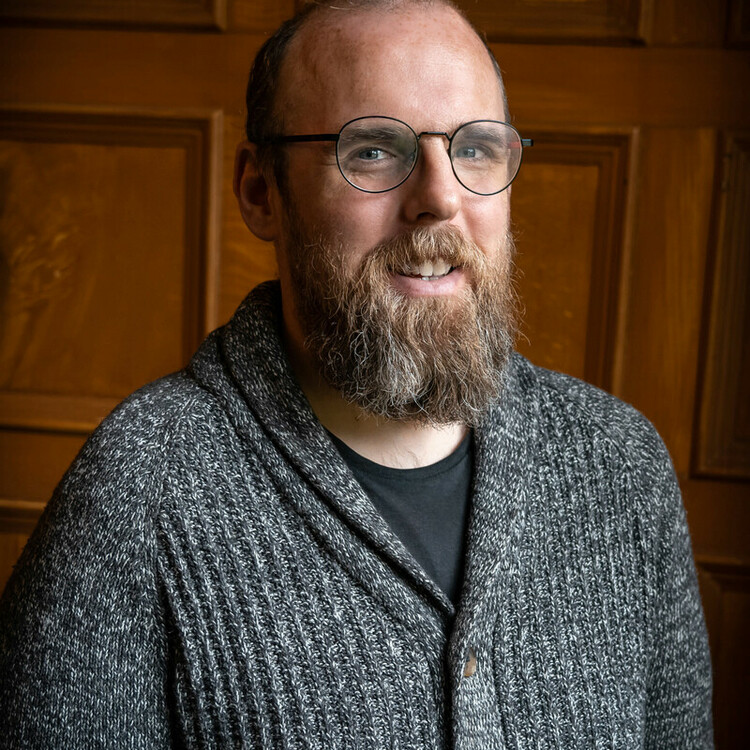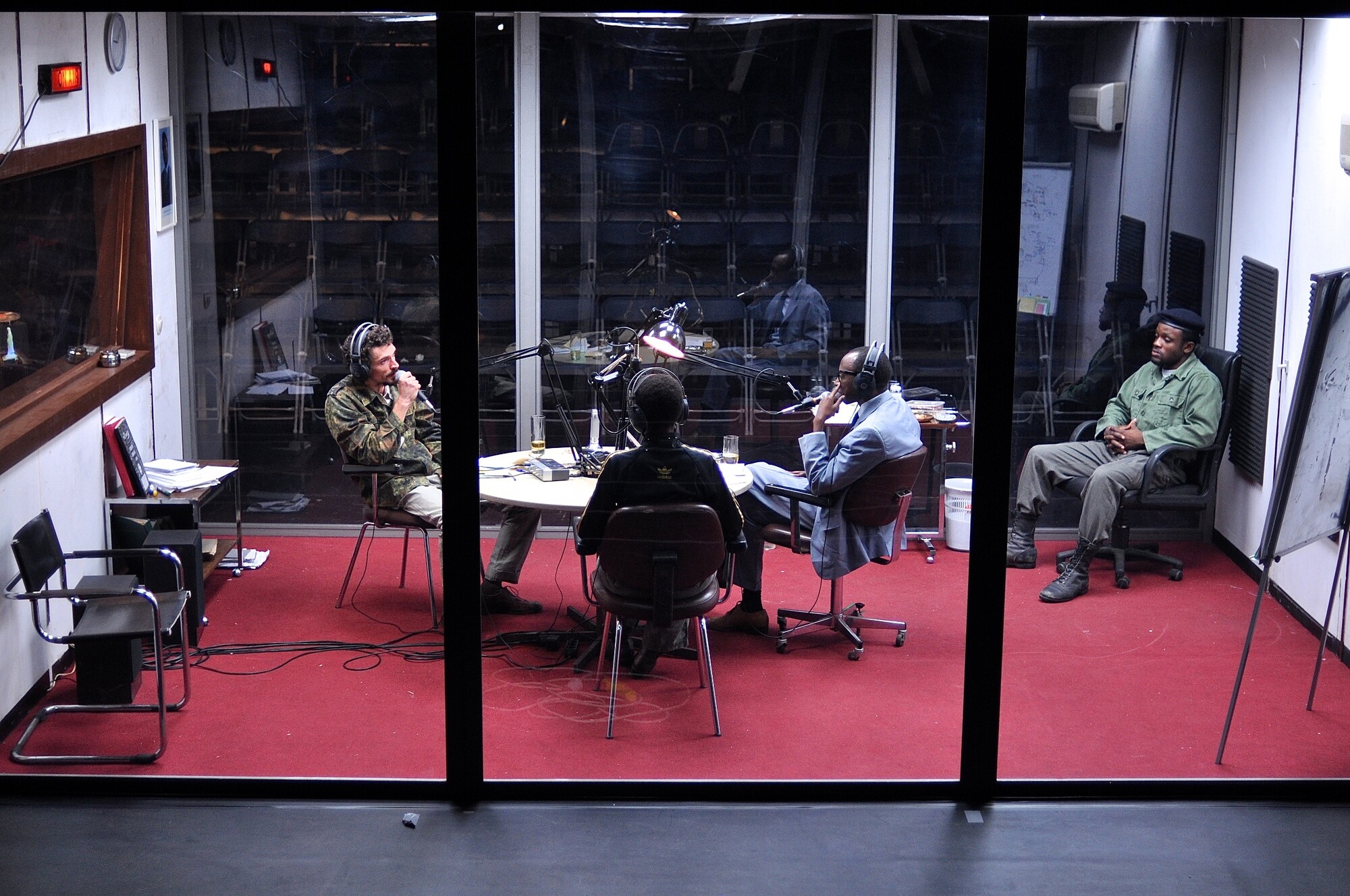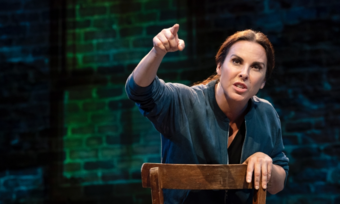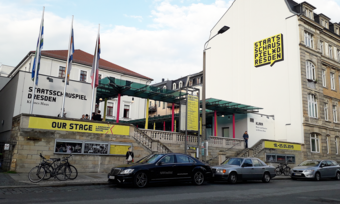Milo Rau is careful to exert only a minimum level of theatricality to avoid the audience misinterpreting the testimony as an artistic embellishment of the evidence. All the text is spoken in French and Kinyarwanda and translated with surtitles, which, for an English-speaking audience, enhances the sense that we are watching a documentary. The specific details of the violence suffered by the Tutsis is described in plain yet haunting language. Details like a mutilated leg or the rape of a child are not described in vivid detail, and thankfully there is no attempt to represent the violence through theatrical means. Directly stating that such acts occurred to the speakers gives the audience a sufficient sense of the scale of the atrocities committed. But as I have written elsewhere, any attempt to engage with otherness in political theatre requires theatremakers and audiences to accept that a profound distinction exists between knowing an event occurred and understanding it and that no single person’s interpretation is universally authoritative. The production’s fidelity to the historical record frames the subsequent live reenactment of an edited RLTM broadcast as a form of theatrical witnessing to the architects of murderous propaganda.
The screen pulls back to reveal a recreation of the RLTM studio behind a transparent screen. Georges Ruggiu, Kantano Habimamba (Diogène Ntarindwa), Valérie Bemeriki (Olga Mouak), and DJ Jojo (Afazali Dewaele) are preparing for their nighttime show. The RLTM studio is a hybrid of entertainment center and military base. At first glance it looks like any other radio station from the 1990s. But a densely annotated map of Rwanda on the back wall and the presence of a young solider with a gun on his belt make it look more a wartime bunker. The soldier’s muted reactions project an air of faint contempt for the jocular tone of the broadcast. He is at RLTM to make sure the presenters—whose ideological narrative of the genocide makes them a kind of intelligentsia, and therefore separate to the military—stay on message.
At one point, Kantanto hosts a history quiz where listeners can phone in and take part. But the ostensibly light-hearted break from the political commentary just becomes another form of spreading propaganda about fallen heroes and national sacrifice. The fusion of news and entertainment isn’t so unusual in the context of the 1990s, when new satellite technology and point-of-view footage from missiles and soldiers’ night vision goggles made war reporting feel more like watching a televised drama or computer game. Fox News gave news items about the 2003 Iraq war titles such as Heart of War and Faces from the Front. Sensationalized media portrayals of warfare, terrorism, immigration, and crime have only accelerated with social media, which has allowed right-wing propaganda to spread on multiple platforms. Social media also provides an endless reservoir for media organizations to fish for controversial content.
The scenography of Hate Radio creates a self-contained world where the radio presenters shape how genocidal acts unfold by creating a script for murderers and rapists to follow in real time.
DJ JoJo appears the least ideologically motivated of the four presenters. During the long rants glorifying the deaths of innocents and the promise that a new Rwanda will be born out of the blood of the dead, DJ JoJo nonchalantly flicks through cassettes and drinks beer, occasionally adding a comment or making a joke. His scant contributions to the broadcast could be interpreted to mean he is the least culpable for the incitements to violence. But that interpretation underplays the importance of his role in normalizing the racism of the hosts. DJ JoJo turns the ideology of ethnonationalism, which was called Hutu Power in Rwanda, into entertaining radio. The ideology itself isn’t enough to keep an audience’s attention.
DJ JoJo acts as a court jester to make the story of killing fun. Playing Nirvana’s “Rape Me” evokes the anarchic spirit of grunge so the RTLM audience would understand Hutu Power to be a cool subculture sticking the middle finger up to the establishment. As I sat in the audience watching the hosts stare into the middle distance idly smoking and drinking in silence as the song played, I started to picture those Rwandan militias who must have listened to the original broadcast and chanted along with Kurt Cobain as they hunted terrified Tutsis. Georges looked out at the audience with cold eyes as the lyrics “Hate me/ Do it/ Do it again” blared over the speakers. It was like he was daring us to stop him from inciting genocidal hatred. Georges’s gaze told the audience that he and his comrades were utterly immune to appeals for mercy from the outside world. Broadcasting the murder of the Tutsis was an expression of Hutu Power, and no-one could stop them.
Dramatizing the news may make for a more compelling viewing experience, but it makes the events being reported on seem somehow less real than more sober and analytical reports. Perceiving violent acts on screen with the same critical lens that one would use to watch an action movie distorts the picture until it becomes a scripted reality, and the human consequences of this propaganda are given no more moral significance than watching a character die on screen. The scenography of Hate Radio creates a self-contained world where the radio presenters shape how genocidal acts unfold by creating a script for murderers and rapists to follow in real time.
Laboratories of Conspiracy
The reenactments of the radio broadcasts are a surreal mixture of racist invective and light entertainment. The three presenters spend a long time reminding their listeners about the righteousness of the genocide by degrading Tutsis as “cockroaches” who would exterminate the Hutus given the opportunity. The self-contained world of the studio makes it appear like a laboratory where a new Rwanda is being born through media. Kantando, Valerie, and Georges talk to each other with back-slapping bonhomie, laughing just a bit too hard and long at each other’s jokes and nodding sagely as they listen to the others express their contempt for their enemies. The superficial camaraderie is an effective tactic used by political commentators to create a sense of community, even family, between journalists and listeners. One of the strangest moments in Hate Radio has all the presenters dance ecstatically to Reel 2 Real’s “I Like To Move It.” The music fuelled their ecstatic revery caused by the knowledge that they were choreographing historical events from the comfort of their studio. They looked from the outside like teenagers throwing a house party. No adults were there to regulate their behaviour or judge their actions. They were free from history, from morality, free from the knowledge that genocide is a crime against humanity as they normalized mass rape, torture, mutilation, and murder.
Fox News created the template for presenting media as disruptors of the status quo. In its early years, the enemies of the ordinary American people were Washington insiders—senators, congressmen, special advisors, human rights lawyers. This narrative then expanded to include Islamic terrorists and their liberal enablers after 9/11. But Fox News now perpetuates a shape-shifting conspiracy theory that white, Christian America is under a constant state of threat from outsiders—a “them” who operate in the shadows of everyday life that only Fox News is turning a spotlight on. The outrage expressed by hosts like Sean Hannity and Laura Ingraham at anything classed as un-American keeps their audience in a permanent state of fear and vigilance. But the threat of otherness is always married with a promise that the battle for the soul of the nation will inevitably be won by white conservatives. This results in the news anchors performing the state of righteous anger they expect their audience to show in the forever war waged by outsiders.
These moments in Hate Radio expose how media can mangle and contort the history of Nazism and colonialism to cast murderers as the victims of authoritarian control and racism as an expression of national pride.
GB News has adapted this conspiratorial agenda for a British audience. GB News presenters often congratulate themselves that they are not following the rules of “the establishment” by telling the truth that the mainstream media censors. Brexit created an imagined community of the “real” Britain that is uniformly white, working class, heterosexual, and which is comprised of people who all live in small towns and villages and despise cultural institutions. Framing every news item in these terms is designed to create strong bonds of loyalty and affection between media and their audience. The anti-establishment narrative peddled by RLTM, Fox News, and GB News works to disrupt norms and moral precepts and is performed as an expression of freedom of speech that their audience are made to feel is being curtailed in all other walks of life.
The RLTM presenters performed a similar mood by telling the Tutsis that it was pointless fighting because “the game is done—cockroaches always lose.” “Cockroaches” was an effective insult because the audience could easily understand how seemingly small creatures can infect the home, which is to say the homeland of Rwanda. The idiom of racial hygiene was borrowed directly from the Nazis. Yet in a grotesque distortion of logic, Georges compares the Hutus to the French resistance who fought to reclaim their country from the invaders. He later invokes another historical analogy when he accuses those who describe the violence against the Hutus as a genocide of “colonialist propaganda.” These moments in Hate Radio expose how media can mangle and contort the history of Nazism and colonialism to cast murderers as the victims of authoritarian control and racism as an expression of national pride. It is not that RLTM denied massacres were taking place, but that the broadcasts claimed the violence was serving a greater moral purpose and was only condemned by agencies like the United Nations because it proved Rwanda was not under Western control. At the very least, the right of Rwandans to murder a minority group was proof that Rwanda was a true democracy.
These reenacted scenes resonated so strongly for me because of the extreme right wing’s current tactic of recycling historical atrocities committed by the United States and European powers to present racism and white supremacy as the natural responses to threats from outside to the majority population. GB News presenter Laurence Fox regularly talks about the end of British civilisation due to mass immigration and a declining birth rate. His catastrophizing directly echoes the far right “great replacement theory.” This conspiracy theory deliberately used the language of colonialism to describe the effects of immigration in a way that casts the white populace as a group that is being made subordinate and inferior subjects. Under these circumstances, what is called racism, so the argument goes, is in fact a defence of a country’s “indigenous” culture. Hate Radio shows what happens when the history of decolonization, anti-racism, and national self-determination is turned into a story about majoritarian victimhood.
Theatre for Disturbing Times
Hate Radio was a fine example of how theatre can contribute to the historical record. Reenactments transmit knowledge about the past that can’t be communicated in conventional historical accounts. The atmosphere of the RLTM studio was absolutely crucial to its success in normalizing the dehumanization of the Tutsis. Watching the presenters enjoying themselves imparts a key insight about how racism as entertainment can act as a parasite in a culture.









Comments
The article is just the start of the conversation—we want to know what you think about this subject, too! HowlRound is a space for knowledge-sharing, and we welcome spirited, thoughtful, and on-topic dialogue. Find our full comments policy here